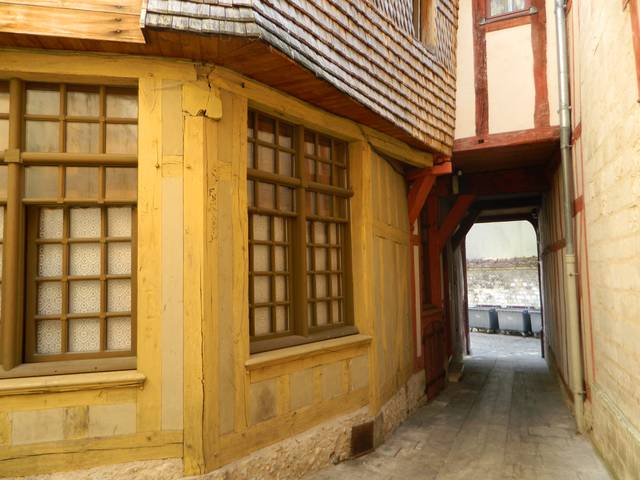
(nur auf Englisch)
The Doué Courtyard (Cour Doué)
Why do you not pass by the Doué Courtyard? Not famous, this tiny and charming passage was actually a real death trap in the 1970s.
Much before these dark hours, the legend says that mirrors were fixed on both sides. To this day, we still do not know any official explanation, but one certain thing is that it was shining!
Make sure to notice the frieze sculpted above the passage, on which you can see bunches of grapes and a few lizards…
Doué Courtyard, ex Mirror Courtyard
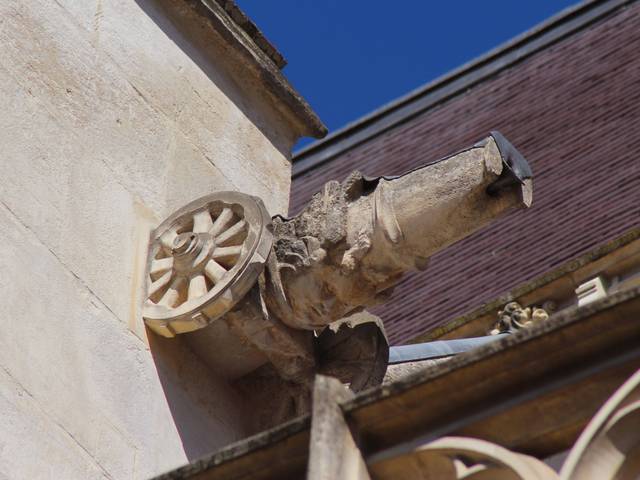
Cannon Church
Have you ever observed the details of Saint-Jean church? Among the flying buttresses, you can discern a gargoyle… But not just any gargoyle: a cannon!
The legend says that an architect specialized in military art would have express his frustration when he was transferred to church construction. One must admit that this is rather unusual!
If you look carefully, you can discover 3 cannons. It is now your mission to find where they are located.
From Alexandre Israël square – At the corner of the Champeaux streets
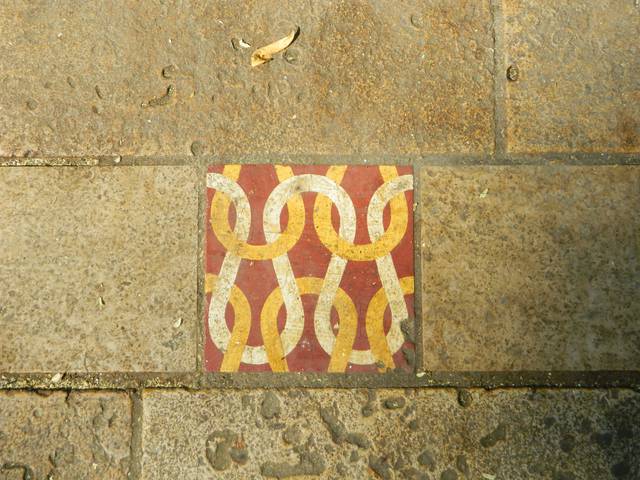
Zoom on the hosiery
Have you ever noticed them? Small red, white and yellow squares are placed on the floor of Jean Jaurès square. Are they simply there to decorate or do they have a real meaning?
Actually, they represent a knitting stitch to give a tribute to the city’s past: in 1837, a Hosiery Hall was built, and it was then transformed into a Labour Exchange in 1905.
This is important to know that this square has a dark past, as, from the 15th century, there was the pillory and then, from the Revolution onward, the guillotine.
Among others, on this square was executed the former prisoner of Clairvaux, Claude Gueux, in 1832, as it was told by Victor Hugo in his famous novel, which became a strong plea against death penalty.
Jean Jaurès square
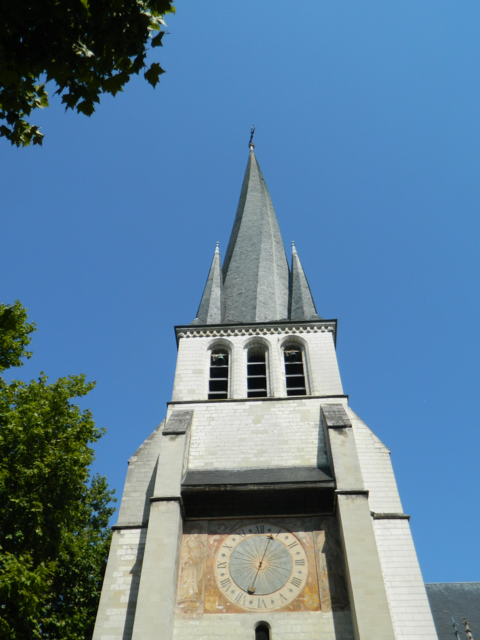
A bell tower that will make your head spin
You can identify the present church, built in the middle of the 15th century, by its 65 cm twisted spire, made of blue slate. But what is the origin of this peculiarity?
This spire was twisted using a construction technique that makes it more windproof. It is a real artistic challenge for both the architect and the carpenter.
Did you know? There is an association of the European twisted bell towers that lists all the churches with this characteristic.
Saint-Rémy church – Saint-Rémy square
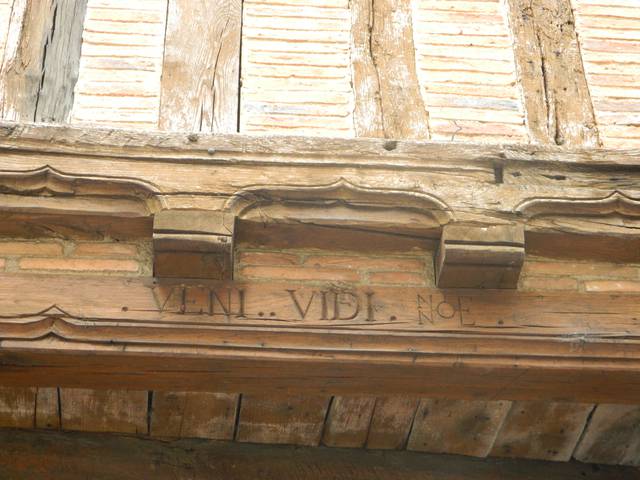
A bit of latin…
Champeaux street is not to be missed during your visit of Troyes.
If you have a break at number 22, where is the optician’s shop, you will see the latin inscription « Veni, vidi », (« I came, I saw »).
It was engraved in 1986 by an architect. What a coincidence!
22 Champeaux street
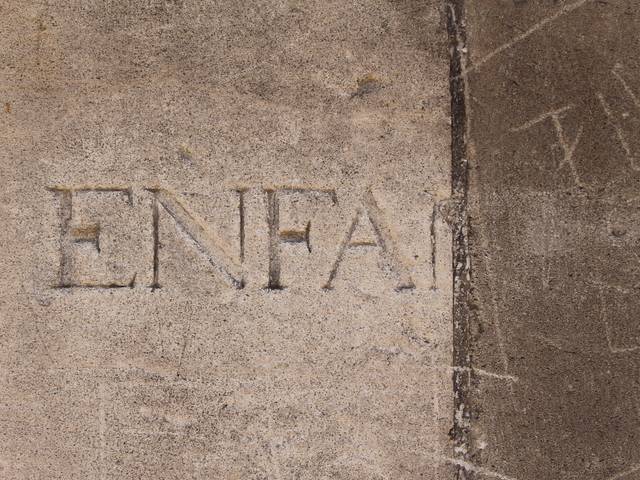
A sad destiny…
In the 12th century, the Hotel-Dieu le Comte, or Hotel-Dieu Saint-Etienne was founded by Henri 1st the Liberal.
He dedicated this institution to poor and sick people, women giving birth, war prisoners and foundlings…
You can still see the inscription « ENFANT », (children), which is the only remnant of the Tower of the foundlings, where abandoned children were received between 1760 and 1790. They were taken care by the nuns of the Hotel Dieu.
Wall of the Hotel-Dieu, on the Cité street side
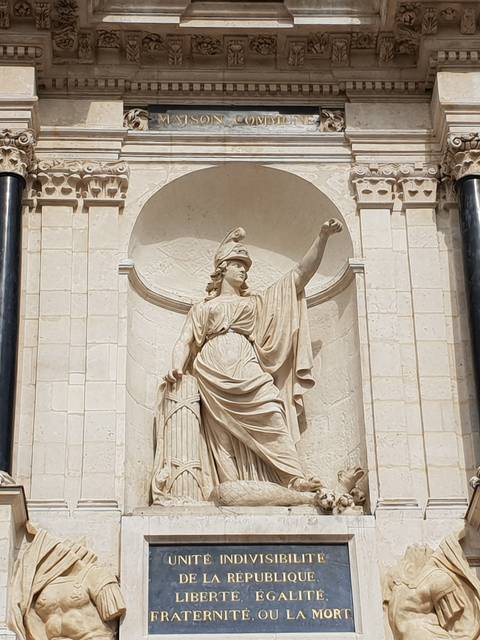
An atypical City Hall
Did you know? On the pediment of the City Hall, on a black plate engraved in gold letters, can be read: « Unity, Indivisibility of the Republic, Liberty, Equality, Fraternity or Death ».
It was the Robespierre’s Revolutionary motto, that the Paris Commune had obliged every Town House to display from 1792. It disappeared in July 1794, at the same time as Robespierre’s head!
The City Hall of Troyes is one of the only one that have kept it.
City hall – Alexandre Israël square
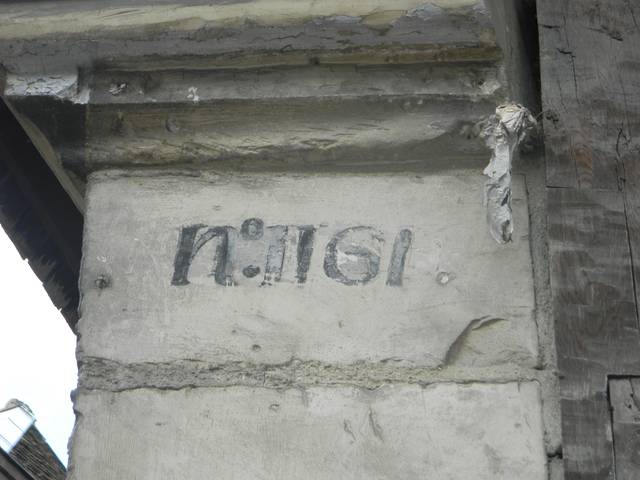
Curious numbers
In 1752, a royal ordinance required cities to widen and align their streets. Five years later, the engineer Bocher de Coluel made the city map of Troyes.
Then, the « plan Coluel » started. Before this royal ordinance, main buildings were named according to their distance to another house with a commercial sign hanging.
The engineer Coluel made a first cadastral plan of the city in 1769, giving numbers to Troyes houses and buildings. On this Coluel plan, number 1 was the City Hall, and the last number, 2766, was given to the former Palace of the Counts of Champagne. If you look carefully, you can see some of these numbers, still visible on some house fronts.
N°1161 : Angoiselles Hotel – At the corner of Montée des Changes street and Général Saussier street
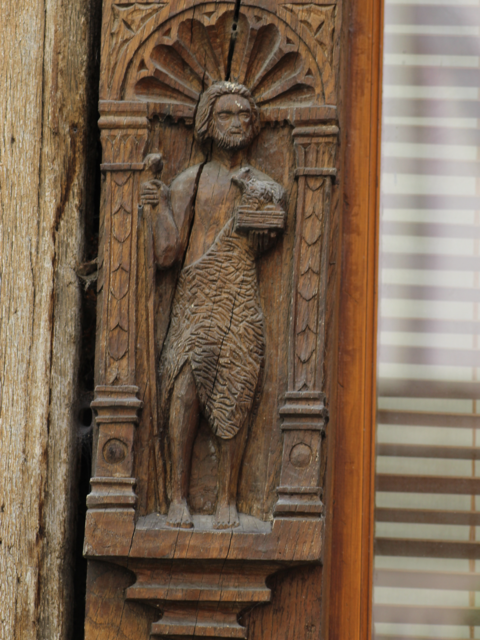
Fighting bad luck
During your walk around Troyes, head to François-Gentil street. There, you will meet three wooden saints, carved on beams, protecting themselves from curses.
They are Saint Roch, Saint Quentin and Saint Jean-Baptiste, who protect from curses.
Between them, Saint Roch was the one protecting from the plague. Legends say that while he was taking care of plague victims, he developed the disease himself. Then, he took refuge in the woods in order to not transmit it, ready to die of hunger. But each day, a dog would bring him a loaf of bread…
This street was also home to one of the first palm games. Will you find the exact place? (Hint: a stained glass window…)
François Gentil street
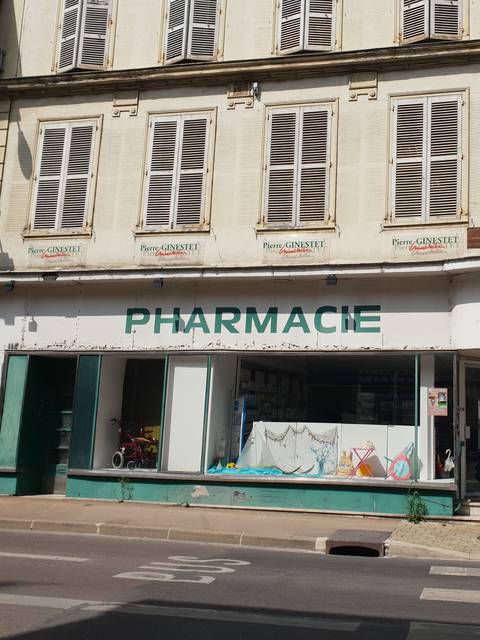
Coué method: simple, practical and easy to develop
Emile Coué was born in Troyes in 1857. He was a brilliant student and wanted to become a chemist.
Unfortunately, because he was not rich enough, he had to give up on his studies. The pharmacist of Troyes Mister Delaunay offered him to be his clerk.
In 1882, Emile Coué successfully graduated as a pharmacist and opened his own pharmacy on Danton boulevard.
This is how, right there in Troyes, Emile Coué developed the foundations of his system based on autosuggestion: « Every day from every point of view, I am getting better and better ». Then, placebo becomes a reality…
Madeleine pharmacy – 116, Général de Gaulle street
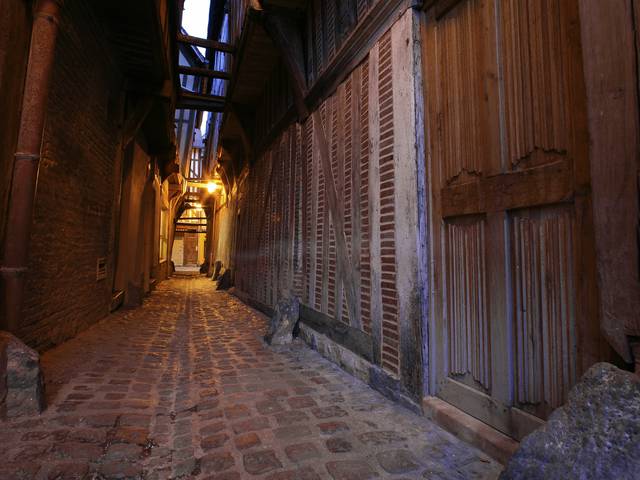
A detour to the « Ruelle des Chats »
The « ruelle des Chats » (alley of the cats), formerly known as Maillard alley, is one of the most famous streets in Troyes.
All its buildings were rebuilt after the great fire of 1524.
Actually, you can notice that the houses have collapsed and lean towards each other until they touch each other. It would have been named « Ruelle des Chats » because cats were jumping from a roof to the other. I « cat » believe it!
the « ruelle des Chats » – Historical heart
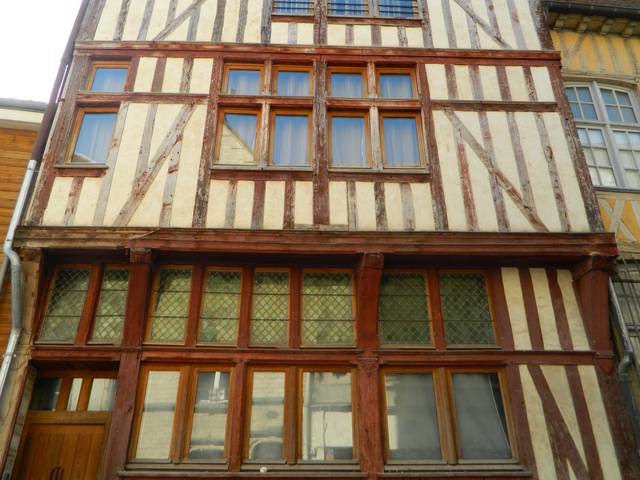
Philosophy
Open your eyes wide.
On a horizontal beam, the following maxim is inscribed: « According to your own self, trust, listen, see, consider and keep silent »… (translated from the French maxim).
The origin of this saying remains enigmatic, but there is no much doubts that brilliant spirits would meet up in this street to talk philosophy in the 18th century…
3, Charbonnet street
Lunchtime!
Today, our territory is beyond rich in culinary treasures…
But what did Troyes inhabitants eat in the past?
The oldest recipe that has been found is from 1662. For the meal, no andouillette, no Sloe Gin of Troyes, and even less champagne!
On the menu were soups, 4 to 5 times a week: 1 or 2 buckets of water, butter or other fats, salt and pepper, peas cooked the day before and herbs.
Then, bread cut into pieces was added, and after boiling, a bowl was serve to each poor person.
Sometimes, pieces of meat were added. Yum.
Photos credits : ©AL-Troyes la Champagne Tourisme © Daniel Le Nevé – Troyes la Champagne Tourisme – © L Dagard – Troyes la Champagne Tourisme
